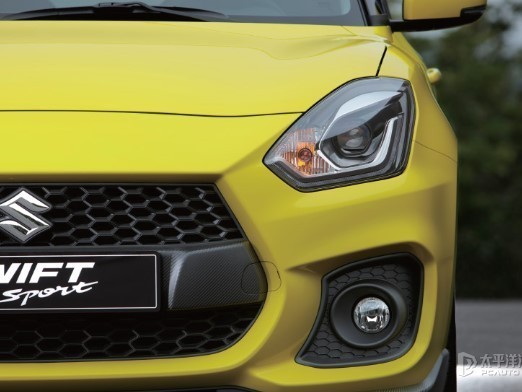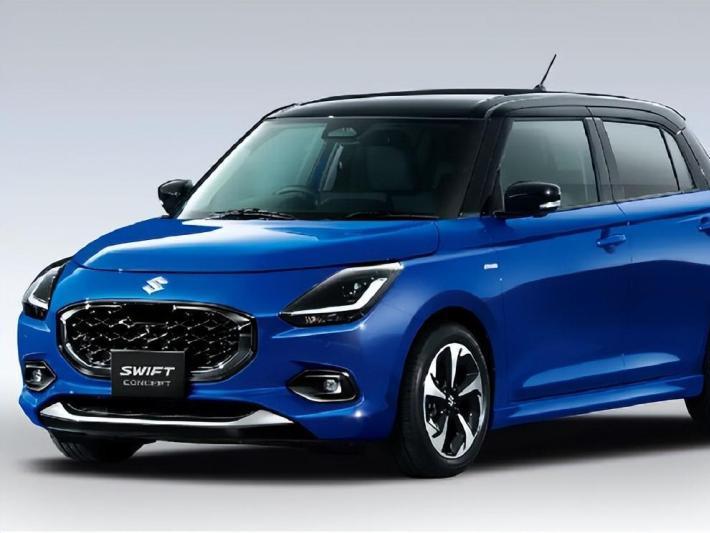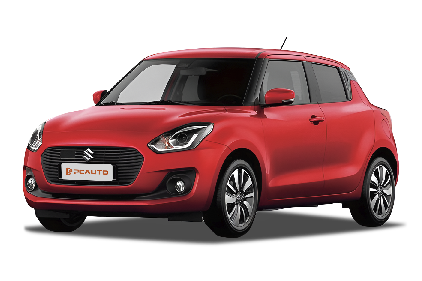Q
What's the engine displacement of Suzuki Swift?
The Suzuki Swift currently on sale in the Malaysian market is primarily powered by a 1.4-liter naturally aspirated engine, with a displacement of 1373cc. This K14B engine features VVT technology, churning out 92 horsepower and 120 Nm of torque, paired with a 6-speed automatic transmission. It delivers excellent fuel efficiency, making it a solid choice for city driving. As a global strategic model for Suzuki, the Swift has won over Malaysia's young consumers with its lightweight body and nimble handling. Its engine displacement strikes a good balance between power and fuel economy needs. It's worth noting that there might be slight variations across different model years or special editions. For instance, some pre-2017 models came with a 1.2-liter engine (1242cc), and certain international markets even offer a 1.0-liter turbocharged version. However, the 1.4-liter remains the mainstream choice in Malaysia. When shopping around, consumers should look beyond just displacement and consider their actual driving requirements. Because engine size directly impacts a vehicle's power delivery characteristics, fuel consumption, and road tax costs. Malaysia's road tax system is tiered based on engine displacement, so the 1.4-liter sits in a relatively economical and budget-friendly category for this segment.
Special Disclaimer: This content is published by users and does not represent the views or position of PCauto.
Related Q&A
Q
How many litres of oil does a Suzuki Swift take?
Alright, car enthusiasts and Suzuki Swift owners in Malaysia, let's talk oil. Typically, your Swift's engine will take around 3.3 to 3.5 liters of oil. The exact amount can vary a bit depending on the model year and, more importantly, the engine under the hood – think 1.4L versus 1.5L units. To be 100% sure, always crack open your owner's manual or have a chat with your authorized Suzuki service center.
Living in Malaysia, where the heat can really crank up, staying on top of oil changes is crucial for keeping your engine happy and healthy. A good rule of thumb is to get that oil swapped out every 5,000 to 10,000 kilometers, or every 6 months, whichever comes first. And when you do, opt for a synthetic oil that meets API SN or SP standards. Trust me, it'll hold up much better in our tropical climate.
Don't forget the basics, either. Regularly check your dipstick to make sure the oil level sits nicely between the minimum and maximum marks. Too much oil, or too little, can both throw a wrench into your engine's performance. And if you notice you're topping up more frequently than usual, don't ignore it. It could be a sign of a leak or some other mechanical gremlin that needs sorting out to keep your Swift running smoothly for the long haul.
Q
What fuel does Suzuki Swift use?
In the Malaysian market, the Suzuki Swift primarily runs on RON 95 unleaded petrol – the most common fuel type there. It's budget-friendly, widely available, and perfectly suits the Swift's engine design. Both the 1.4L naturally aspirated and 1.0L turbocharged engines under the Swift's hood are tuned to work optimally with RON 95, striking a good balance between fuel efficiency and power. Now, if owners occasionally fill up with higher octane RON 97, it won't hurt the engine, but it's just less economical. The Swift's compression ratio isn't high enough to warrant splurging on premium fuel.
Malaysia's fuel standards are strictly regulated by the government, and both RON 95 and RON 97 come with detergents to help minimize carbon buildup. It's best for owners to stick to the manufacturer-recommended fuel grade and keep up with regular maintenance to keep the engine performing at its peak.
Also, fuel consumption can be influenced by the season or driving habits. Aggressive driving or frequent short trips can take a toll on fuel economy, while smooth acceleration and maintaining proper tire pressure can help optimize it. One thing to note: some petrol stations in Malaysia offer biofuel blends (like B7 biodiesel), but these are only intended for diesel-powered vehicles, so petrol car owners don't need to worry about that option.
Q
How many miles are left when the fuel warning light of Suzuki Swift illuminates?
When the fuel light comes on in a Suzuki Swift, it usually means there's roughly 7 to 10 liters of gas left in the tank. How far you can go after that depends on your driving conditions and the specific model, but generally, you're looking at around 80 to 120 kilometers in city traffic. Hit the highway, and you might stretch it to 120 to 150 kilometers.
Pro tip: Once that light pops on, it's best to refuel sooner rather than later. Running too low can mess with the fuel pump, and keeping a steady, smooth driving style will help you squeeze every last kilometer out of that remaining gas.
Keep in mind, tank design and fuel economy vary a bit between Swift models, so your owner's manual is the go-to for the most accurate numbers. And don't sleep on regular maintenance—checking tire pressure, for example, can really boost fuel efficiency and cut down on unnecessary consumption.
Q
How to check power steering fluid in Suzuki Swift?
Checking the power steering fluid level in your Suzuki Swift is a straightforward task. First, make sure the car's parked on level ground and the engine's cooled down. Pop the hood and look for the power steering reservoir—you'll usually find it near the driver's side with a steering wheel icon on it. There are "MIN" and "MAX" lines on the side; the fluid level should sit right between them. If it's below "MIN," top it up with the correct spec fluid—stick with the factory-recommended stuff for best performance, trust me.
Heads up though: if you're constantly having to add fluid, there might be a leak in the system. Get that checked out ASAP to avoid damaging the power steering pump. Also, don't sleep on regular fluid changes—most folks recommend every 2 years or 40,000 km. Letting it go too long can make the fluid break down, which hurts steering responsiveness and shortens the system's lifespan.
Living in Malaysia's hot, humid climate? That means your power steering system's working extra hard. So stay on top of those checks and maintenance to keep things driving safely and smoothly.
Q
What's the specification of the engine of Suzuki Swift?
The Suzuki Swift's engine options in Malaysia vary depending on the model year and trim level. The current mainstream variants are powered by a 1.4-liter K14B naturally aspirated four-cylinder petrol engine, churning out approximately 91 horsepower and 130 Nm of torque. This engine is known for its fuel efficiency and durability, making it well-suited for city commuting. While some international markets offer 1.2-liter or 1.0-liter turbocharged options, the Malaysian Swift lineup primarily sticks with the 1.4-liter unit.
For fuel-conscious buyers, the Swift's lightweight body paired with its small-displacement engine delivers an impressive combined fuel economy of around 18-20 km/l, all while maintaining nimble handling characteristics that make zipping through traffic a breeze. If you're considering a used Swift, earlier models from 2005-2010 might come with a 1.5-liter engine, so it's always a good idea to check the specific configuration using the vehicle's VIN.
Given Malaysia's hot climate, regularly changing the coolant and keeping the cooling system clean are key to extending the lifespan of these smaller engines. Fortunately, the Swift's engine design takes tropical conditions into account, and locally assembled versions undergo specific tuning to adapt perfectly to our environment.
Q
What's the weight of the Suzuki Swift?
Depending on the model year and trim level, the Suzuki Swift's curb weight in the Malaysian market typically ranges from around 890 kg to 1,020 kg. The exact figure varies based on the specific variant and powertrain setup – for instance, base models with the 1.2L naturally aspirated engine tend to be lighter, while versions equipped with extra comfort features or hybrid systems tip the scales a bit more.
Weight plays a big role in how a car handles and sips fuel, and the Swift's lightweight design really shines in city driving. It delivers nimble steering and impressive fuel economy, making it a solid fit for Malaysia's twisty roads and stop-and-go traffic. What's more, Suzuki's use of lightweight yet high-strength steel not only keeps the body rigid and safe but also helps keep maintenance costs in check.
If fuel efficiency is a top priority, keep an eye on the official figures – they usually land between 18km/L and 22km/L. In a market like Malaysia where fuel prices can swing pretty often, that kind of frugality gives the Swift a clear edge when it comes to long-term running costs.
Q
How much horsepower does the Suzuki Swift produce?
The Suzuki Swift currently on sale in Malaysia comes equipped with a 1.4-liter K14B naturally aspirated engine, churning out 92 horsepower and 130 Nm of peak torque. It's mated to either a 5-speed manual or a 4-speed automatic gearbox. This nimble hatchback has won over urban drivers with its fuel efficiency and agile handling.
It's worth noting that the Swift offers different powertrain options across markets. For instance, the Japanese-market Swift Sport packs a punch with a 1.4T turbocharged engine delivering 140 horsepower, though this variant hasn't made its way to Malaysia yet. For Malaysian consumers craving more performance, keep an eye on the Swift's tuning potential. Thanks to its lightweight design (around 900kg) and solid chassis, simple intake and exhaust upgrades can noticeably sharpen throttle response. Just be sure to go with reputable tuning shops to keep your ride reliable.
As a global icon with over 6 million units sold, the Swift's durability and low maintenance costs are added practical perks, especially handy in Malaysia's tropical climate.
Q
What is the fuel consumption of the Suzuki Swift?
The Suzuki Swift's fuel economy varies depending on its engine configuration and driving conditions. The 1.4-liter naturally aspirated version commonly found in the Malaysian market has official combined fuel consumption figures of around 5.4 to 5.7 liters per 100 kilometers. In real-world driving, you might see city fuel consumption creep up a bit to approximately 6.5 liters per 100km, while highway cruising can bring it down to under 5 liters per 100km. Of course, actual fuel usage will be influenced by driving habits, road conditions, and the vehicle's maintenance status.
As a lightweight hatchback, the Swift owes its fuel-sipping nature to efficient engine technology paired with a CVT transmission, making it a solid choice for city commutes. If you're looking to squeeze even more efficiency out of it, regular maintenance is key—think replacing the air filter and using the right viscosity engine oil. Also, avoiding aggressive acceleration or speeding helps, and in Malaysia's hot climate, using the air conditioning moderately strikes a good balance between fuel economy and comfort.
Rivals like the Perodua Myvi or Honda Jazz offer similar fuel efficiency, but the Swift holds its own in the local market with its nimble handling and the tried-and-tested reliability that Japanese cars are known for.
Q
What is the tire pressure of Suzuki Swift?
For Suzuki Swift owners in Malaysia, the recommended tire pressure can be found on the manufacturer's label located on the driver's side door frame or inside the fuel filler cap. Typically, the front tires are suggested to be set between 30 - 33 psi (2.1 - 2.3 bar), and the rear tires between 28 - 32 psi (1.9 - 2.2 bar). However, these figures may vary slightly depending on the model year and specific configuration, for instance, versions equipped with 16 - inch wheels might require 1 - 2 psi higher pressure than those with 15 - inch rims.
It's important to note that Malaysia's tropical climate causes tire pressure to increase as temperatures rise. So, it's recommended to check pressures monthly when the tires are cold (after the vehicle has been parked for 3 hours or driven less than 2 kilometers). When carrying heavy loads on long trips, you can increase the pressure slightly by 2 - 3 psi, but never exceed the maximum limit indicated on the tire sidewall.
Maintaining the correct tire pressure not only improves fuel efficiency by 5% - 10% but also prevents premature wear – such as center tread over - wear from over - inflation or shoulder under - wear from under - inflation. During the rainy season, proper pressure enhances water evacuation, reducing the risk of hydroplaning.
If you frequently drive on rough roads along Malaysia's East Coast or mountainous routes like Genting Highlands, consider fine - tuning pressures based on the manufacturer's recommendations, ensuring that pressures remain consistent across the same axle.
Q
How many setas does the Suzuki Swift have?
The Suzuki Swift is a compact hatchback that's long been a favorite among Malaysian drivers. The latest model on sale comes standard with a 5-seat layout – two up front and a three-person bench in the back – making it ideal for small families or daily commutes. It's known for its nimble handling and impressive fuel efficiency. Even though it's a small car, smart space planning ensures decent legroom for rear passengers, though the middle seat can feel a bit tight on longer journeys.
It’s worth noting that seat designs have varied slightly across Swift model years. For instance, some older versions offered 60:40 split-folding rear seats to expand cargo space, while sportier trims might feature more supportive, contoured seats to up the driving excitement. In Malaysia, the Swift also gives you engine options: a 1.4L naturally aspirated or a 1.0L turbocharged unit, both paired with a lightweight body – a combo that really shines in city driving.
If you’re eyeing a used Swift, I’d recommend checking the seats for wear in person. These cars are often used as ride-shares or daily workhorses here, so they can rack up the miles pretty quickly.
Latest Q&A
Q
Do all 2020 Honda Accords have remote start?
Some high-end variants of the 2020 Honda Accord in the Malaysian market do come with remote start, but it's not standard across all trims—it really depends on the specific model specs and optional packages. You'll usually find remote start on models equipped with the smart key system. With that, owners can fire up the engine from a distance using the key fob or a smartphone app, preheating or cooling the cabin beforehand. This feature is especially handy given Malaysia's hot climate. It's worth noting that using remote start might be subject to local regulations; for example, the engine typically shuts off automatically after 10-15 minutes for safety reasons. If your Accord doesn't have it as standard, some third-party workshops offer compliant installation services, but it's better to go through Honda's authorized service centers first to ensure compatibility with the electrical system. Accord configurations can vary between markets, so your best bet is to check the specific model specs on Honda Malaysia's official website or just reach out to a local dealer to confirm. For those curious about the tech behind it, remote start systems usually rely on RF signals or 4G networks these days. Modern models even integrate smart features like air conditioning setting memory. As vehicle connectivity tech advances, we can expect these remote control features to get even more sophisticated in the future.
Q
Can I start my 2020 Honda Accord from my phone?
The 2020 Honda Accord's higher trim models in Malaysia do offer remote engine start via smartphone, but you'll need the HondaLink app for that. With it, you can fire up the engine, pre-cool or pre-heat the cabin, and unlock the doors from around 50 meters away using Bluetooth or a network connection. Just keep in mind Malaysia's hot and humid weather can sometimes mess with phone signal, so it's a good idea to park where the network coverage is strong. Also, this feature requires the car to have the smart key system and a subscription to the relevant service. The functions might vary between different model years and configurations of the Accord. Malaysian owners can check if their vehicle supports this by looking for a remote start button on the left side of the steering wheel or by consulting their local Honda dealer. Similar smartphone remote control technologies are becoming more common these days, with brands like Toyota offering Toyota Remote Connect and Nissan providing NissanConnect. However, the specific range of functions and subscription costs can differ depending on the market and the model. It's advisable to thoroughly review the configuration list before purchasing a car.
Q
How much does it cost to insure a 2020 Honda Accord?
In Malaysia, insurance costs for a 2020 Honda Accord can vary based on several factors, including the car's market value, engine capacity, the owner's age, driving record, and the type of insurance chosen. Generally speaking, annual premiums for Comprehensive Insurance range from around RM2,500 to RM4,500, while Third-Party Insurance is much cheaper, typically costing between RM1,000 and RM2,000. It's worth noting that insurance prices are also influenced by insurance company promotions; for example, a No Claim Discount (NCD) can significantly reduce premiums, with savings of up to 55%. Additionally, Malaysia's insurance market offers add-on coverage options like special natural disaster insurance or road rescue services, which will increase the total premium. It's advisable for car owners to compare quotes from multiple insurance companies before purchasing and consult with professionals to ensure they select the insurance plan that best fits their needs.
Q
How much is my 2020 Honda Accord worth?
Based on the Malaysian used car market, a 2020 Honda Accord is currently valued between RM110,000 and RM140,000. The exact price depends on factors like condition, mileage, trim level, and service history. For example, the higher-spec 2.0L Turbo holds its value better than the 1.5L Turbo, and cars with under 50,000 km and full original service records usually sell for 5% to 10% more.
The Honda Accord is a popular mid-size sedan among Malaysian buyers, known for its reliable performance, spacious interior, and good fuel economy—keeping demand steady in the used market. The 2020 model’s Honda Sensing safety suite has only boosted its appeal. If you’re selling, start by getting accurate quotes from online used car platforms or professional valuation services. Make sure the car’s exterior and mechanicals are in good shape to fetch a better price. Also, checking the used prices of rivals like the Toyota Camry or Mazda 6 from the same year will help you set a more realistic price.
Q
How much is a new battery for a 2020 Honda Accord?
The price of a new battery for the 2020 Honda Accord in Malaysia ranges from approximately RM500 to RM1500. The exact cost depends on the battery type, brand, and where you get it replaced. Original equipment (OE) batteries are usually more expensive but come with a warranty, while third-party brands like Panasonic, Amaron, or Bosch might offer better value for money. Malaysia's hot and humid climate takes a toll on battery life, so it's advisable to choose batteries with good high-temperature resistance, such as AGM (Absorbent Glass Mat) or EFB (Enhanced Flooded Battery) types. These are more suitable for vehicles equipped with start-stop systems. Additionally, regularly checking the battery condition and ensuring the charging system is functioning properly can also extend the battery's lifespan. For a more accurate quote, it's recommended to contact an authorized Honda service center or a reputable car repair shop directly; they can provide more detailed advice based on your specific vehicle model and needs.
View MoreRelated News

RM130,900! 2024 Swift Sport 1.4 AT: More affordable price, same strong performance
AshleyAug 2, 2024

The Brand New Generation of Suzuki Swift will be Unveiled in May, Featuring a Mild Hybrid System
Kevin WongApr 18, 2024

Suzuki Fronx vs. Toyota Yaris Cross comparison, which one is more worth buying?
LienOct 5, 2025

Suzuki makes major changes to its brand logo for the first time in 22 years, adopting a flat design style
JohnSep 23, 2025

Suzuki eVITARA pure electric SUV is about to enter the Malaysian market, competing with BYD Atto 3
RobertAug 27, 2025
View More


















Pros
Cons